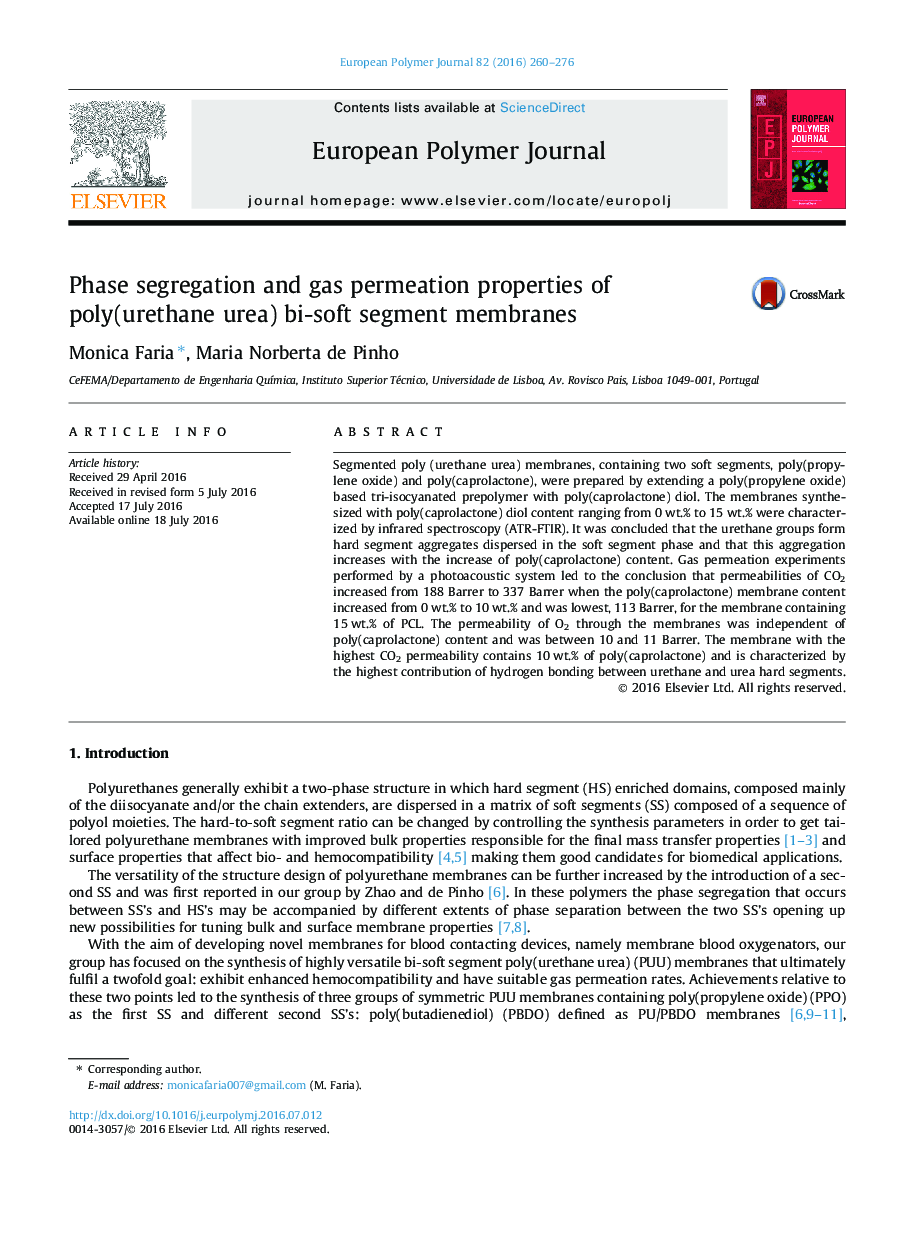| کد مقاله | کد نشریه | سال انتشار | مقاله انگلیسی | نسخه تمام متن |
|---|---|---|---|---|
| 1399148 | 1501353 | 2016 | 17 صفحه PDF | دانلود رایگان |
• Segmented poly (urethane urea) membranes containing poly(caprolactone) are prepared.
• O2 and CO2 gas permeabilities are measured by a highly sensitive photoacoustic detection system.
• Hard segment aggregates of urethane groups are dispersed in the soft segment phase.
• Hard segment aggregation increases with the increase of PCL content.
• CO2 permeability is higher for the membrane with highest hard segment bonding.
Segmented poly (urethane urea) membranes, containing two soft segments, poly(propylene oxide) and poly(caprolactone), were prepared by extending a poly(propylene oxide) based tri-isocyanated prepolymer with poly(caprolactone) diol. The membranes synthesized with poly(caprolactone) diol content ranging from 0 wt.% to 15 wt.% were characterized by infrared spectroscopy (ATR-FTIR). It was concluded that the urethane groups form hard segment aggregates dispersed in the soft segment phase and that this aggregation increases with the increase of poly(caprolactone) content. Gas permeation experiments performed by a photoacoustic system led to the conclusion that permeabilities of CO2 increased from 188 Barrer to 337 Barrer when the poly(caprolactone) membrane content increased from 0 wt.% to 10 wt.% and was lowest, 113 Barrer, for the membrane containing 15 wt.% of PCL. The permeability of O2 through the membranes was independent of poly(caprolactone) content and was between 10 and 11 Barrer. The membrane with the highest CO2 permeability contains 10 wt.% of poly(caprolactone) and is characterized by the highest contribution of hydrogen bonding between urethane and urea hard segments.
Figure optionsDownload as PowerPoint slide
Journal: European Polymer Journal - Volume 82, September 2016, Pages 260–276
